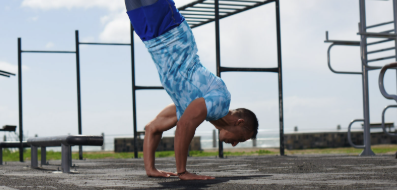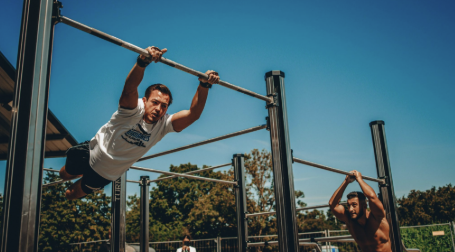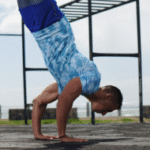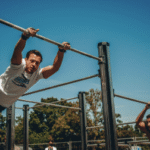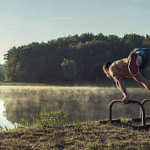Is a Handstand Class Right for Me? A Houstonian’s Guide
The handstand is one of the most iconic displays of physical control and strength. In a city like Houston, where boutique fitness and skill-based training are on the rise, dedicated handstand classes have become a popular and intriguing option. But as you watch someone effortlessly balance on their hands, it’s natural to wonder, “Is that something I could actually do? Is a handstand class right for me ?”
The answer has less to do with your current strength or background and more to do with your goals and mindset. This guide will walk you through a detailed self-assessment to help you decide if embarking on this empowering journey is the right next step for your fitness.
First, Let’s Debunk the Myths: Who is a Handstand Class REALLY For?
Before you can decide if a handstand class is right for you, it’s crucial to understand who it’s designed for.
Myth 1: You need to be a gymnast or a yogi. While many gymnasts and yogis practice handstands, a beginner’s class is designed for the absolute novice—someone who has never even attempted to kick up against a wall.
Myth 2: You need to be super strong to start. You don’t start a handstand class because you’re strong; you join a handstand class to get strong in a very specific and functional way.
Myth 3: It’s just a cool party trick. While it is a cool skill, the process of learning a handstand builds incredible full-body strength, body awareness, discipline, and mental fortitude that benefit every other aspect of your life.
A handstand class is for anyone, regardless of age or background, who is looking for a new and rewarding physical challenge.
Your Personal Checklist: Is a Handstand Class a Good Fit?
Ask yourself these questions to determine if this journey aligns with what you’re looking for.
- What Are Your Fitness Goals?
A handstand class is a perfect fit if your goals include:
Building Functional Upper Body and Core Strength: A handstand is a full-body exercise. It will build powerful, stable shoulders, a rock-solid core, and strong arms in a way that traditional weightlifting can’t replicate.
Improving Balance and Body Awareness: The skill of balancing on your hands requires an intense mind-body connection, dramatically improving your coordination and proprioception (your sense of where your body is in space).
Seeking a New, Motivating Challenge: If you’re tired of the same old gym routine and want a clear, skill-based goal to work towards, the journey to a handstand is incredibly rewarding. Every small victory feels like a major accomplishment.
- What is Your Current Fitness Level?
The Good News: You don’t need any specific prerequisite strength. A well-structured beginner’s class will start from zero.
A Helpful (But Not Required) Baseline: If you can comfortably hold a plank for 30-60 seconds , you already have a good starting point for the core and shoulder stability needed. But even if you can’t, the conditioning drills in the class are designed to build you up.
- Are You Patient and Process-Oriented?
This is a crucial mental check.
A Handstand is a Marathon, Not a Sprint: Learning to balance on your hands is a long-term project. It takes months, and for many, years of consistent practice. If you are someone who needs instant gratification, this might be a frustrating journey.
Embracing the “Failures”: You will fall (safely!) hundreds, if not thousands, of times. A handstand class is right for you if you can view these “failures” not as setbacks, but as valuable feedback and a necessary part of the learning process.
- What Are Your Biggest Fears?
A good class is designed to systematically dismantle the most common fears.
“I’m Afraid of Falling and Hurting Myself.”
This is the 1 fear for every beginner. A quality handstand class makes this its first priority. You will be taught how to safely bail out of a handstand, typically by turning it into a simple cartwheel. You will practice this safe exit strategy repeatedly until it becomes second nature, effectively removing the fear of falling.
“I’m Worried About My Wrists Hurting.”
This is a valid concern, as the wrists are not naturally designed to bear the body’s full weight. A safe class will dedicate a significant portion of every session to wrist conditioning and mobility exercises . This gradually strengthens the tendons and muscles, preparing them for the load and drastically reducing the risk of injury.
What a Quality Handstand Class in Houston Looks Like
When you join a class, you should see these elements, which ensure it’s a good fit for a beginner:
A Focus on the Foundation: The first 15-20 minutes should be dedicated to a thorough warm-up, with a heavy emphasis on preparing the wrists and shoulders.
Strength Before Skill: A large part of the class will be spent on conditioning drills on the floor—planks, hollow body holds, pike push-ups—building the necessary strength before you even spend much time upside down.
The Wall is a Tool, Not a Crutch: You will use the wall extensively to build endurance, learn proper body alignment, and practice balance drills in a safe, supported environment.
A Supportive and Non-Judgmental Atmosphere: The environment should be encouraging. Everyone is on their own journey, and a good coach and community will celebrate every small step of progress.
Conclusion:
A handstand class is right for you if you are looking for a challenging, process-oriented journey that builds incredible functional strength, body control, and mental resilience. It’s not for those seeking a quick fix or who are easily frustrated by slow progress. If you are ready to be patient, embrace the process, and put in the consistent work, a handstand class in Houston could be one of the most rewarding and empowering fitness decisions you ever make.

Is a Handstand Class Right for Me? A Houstonian’s Guide
Route
Calisthenics Gym Houston Functional Bodyweight Training
Secondary phone: (346) 483-3195
Email: info@calisthenicsclubhouston.com
URL: https://calisthenicsclubhouston.com/
Monday 6:00 AM - 7:00 PM Tuesday 6:00 AM - 7:00 PM Wednesday 6:00 AM - 7:00 PM Thursday 6:00 AM - 7:00 PM Friday 12:00 PM - 6:30 PM Saturday 9:45 AM - 12:00 PM Sunday 3:00 PM - 5:00 PM

